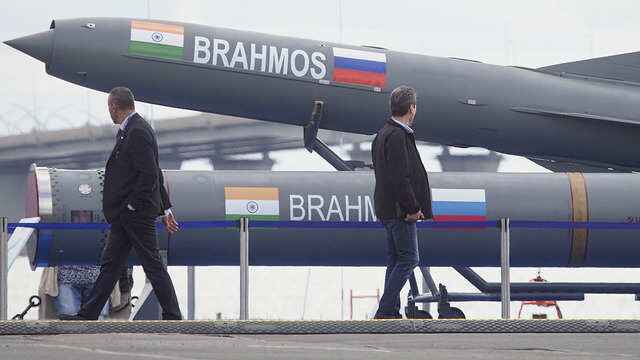Giving Teeth To Indian Coastal Defence

By
Colonel Awadhesh Kumar
The Saudi Drone attack has clearly shown that apart from the Fleet for the Blue Waters, a Naval Command must also have a Flotilla for Coastal Waters and a Surveillance & Defence Centre for protection from all types of sea and airborne threats.
The Indian Navy is progressing quite well on its path to have a full fledged blue water Fleet for both its Western Naval Command and Eastern Naval Command. Soon each Fleet will also have an integral Carrier Battle Group.
The number of Combatant Vessels are slowly but surely increasing also in the Southern Naval Command and the tri service A& N Command. The day is not far off when a Fleet each should be forming up in these two commands also.
Actions have been initiated to ensure that we have enough of Corvettes, Patrol Ships, minesweepers etc to form a Coastal Defence Flotillas in each of the above Commands.
However what the Mumbai attack from the sea by Kasab gang had demonstrated that there was a big gap in our Coastal Surveillance and Security System.
Since then many steps have been taken to slowly establish a grid lock to ensure proper 24×7 surveillance on the Coastal Front. What is required is to have a layered detection, surveillance and interception system for all types of seaborne / airborne threats.
The detection range needs to be as far ahead as possible, so as to give maximum time for interception action. There should be enough redundancy built in to tackle threats from enemy Electronic Warfare and other Electronic Countermeasures and even seawards “commando “ raids
Apart from passive defence in the form of detection, surveillance and interception of incoming hostile aircrafts/ missiles and drones, our defence system also needs to posses teeth to destroy the very platforms, which threaten to launch or actually launch such weapons against our Coast. The Indian Navy, in the days of old had been operating what is called Coastal Batteries. The coastal guns gave way to missile batteries with limited ranges.
Now the Navy has ordered two batteries of indigenous BRAHMOS missiles for coastal defence. Each battery has two truck-mounted launchers, with three missiles per launcher along with radars and communications equipment.
The radar with each battery for detecting targets are mobile and can also function in a net centric manner with Ships deployed ahead. These Batteries also include a mobile air-defence radar and shoulder-fired anti-aircraft missiles. These land based anti ship version of BRAHMOS were first test fired in 2010 and are now cleared for deployment.
These land-based anti ship missiles are carried, three to a truck, on a 12 wheel vehicle which also acts as a launcher. The three ton missile has a range of 500 kilometres and has a 200 kg warhead.
The BRAHMOS missile is very difficult to intercept as it travels at a very high speed Mach 4 or Mach5 and reaches its target at maximum distance in less than 5 minutes.
Even a modern 10000 ton destroyer will find it very difficult to stop a salvo of four missiles simultaneously. Soon the range of the missiles are likely to increase to 800km.
The coastal batteries cost around Rs 650 crore each.Probably 6 batteries will be required to completely defend our Coast line from Sir Creek area on Gujarat Coast to Karwar Coast.
One advantage is that these batteries can be moved around, making it more difficult for someone to destroy them before they could be used. Requirement for other Naval Commands will have to be worked out accordingly.
India and Russia have developed this missile jointly and the BRAHMOS will soon have a export version. Many countries are showing interest in this missile but the high price of each missile needs to be brought down.
A similar American weapon, the ATACMS rocket, also has a range of 300 kilometres, uses GPS guidance, and has a 227 kg (500 pound) warhead. ATACMS costs a million dollars each, but are not as fast and lack an elaborate terminal guidance system.
BRAHMOS is a very effective coastal defence weapon system. For example, if the Vietnamese are given a few dozen of BRAHMOS missiles for Coastal defence, then it will be a game changer with respect to any threat from China.
With Indonesia possessing a few, they can prevent any naval ship or merchant shipping crossing from the choke points in ASEAN Seas. The same thing can happen in the Straits of Hormuz.
In other words, the BrahMos missile could close those straits, through which most of the worlds’ oil supplies pass. So India has to be very careful, as to whom these missiles may be supplied. Any way those arming Pakistan now have to be more careful because now India too can similarly arm their opponents.
India is has also developed the air-launched version, to be fitted on its Su-30 fighters. Presently each Sukhoi can carry just one missile with 400 km range. Soon the range will be increased to 800km.
This combined with Sukhoi range and with mid air refueling, IAF will be able to cover the entire Indian Ocean Region and penetrate deep into Pacific.
Indian scientists are also working to reduce the weight of the Next Generation BRAHMOS, so that each Sukhoi can carry 2 or 3 of these missiles and even Rafael and Mirage 2000 will be able to carry one each.
The AMCA will definitely be armed with BRAHMOS NG missiles. There will also be our own satellite based guidance system (like GPS) to guide these missiles for various land / sea targets stationary or moving.




